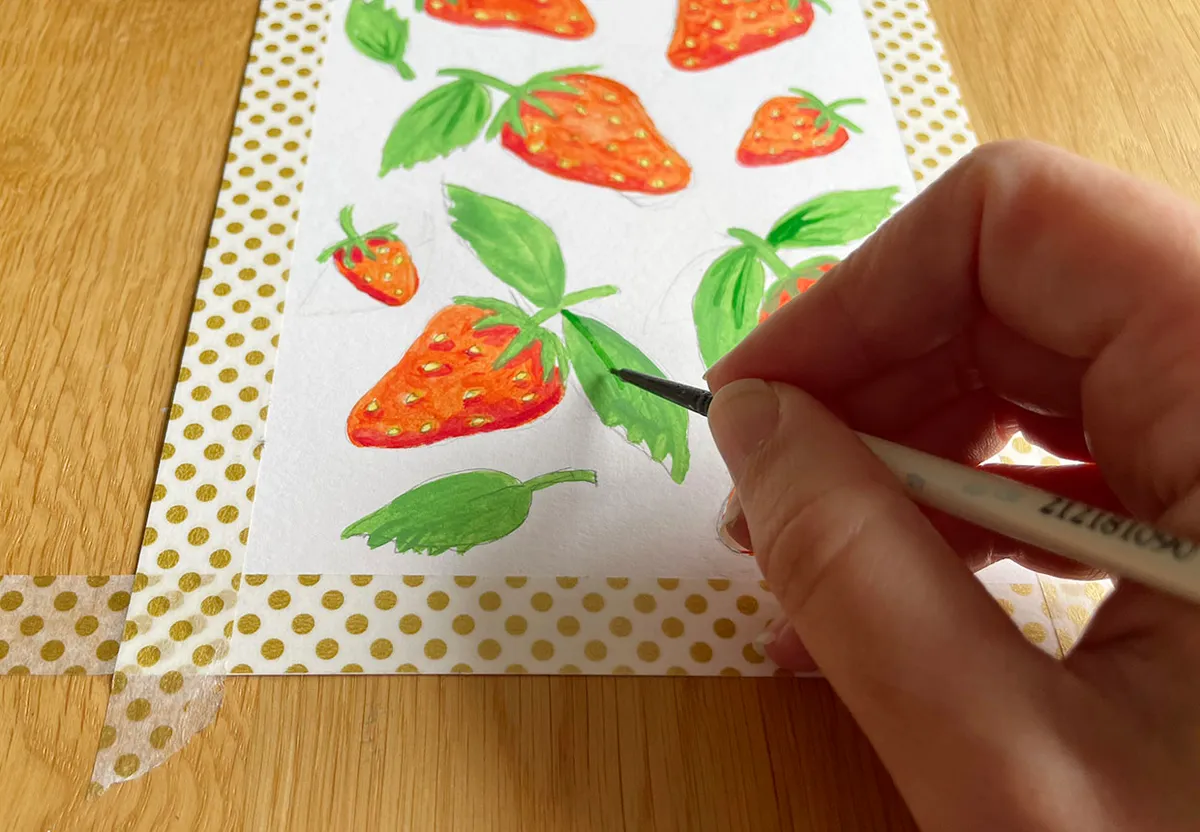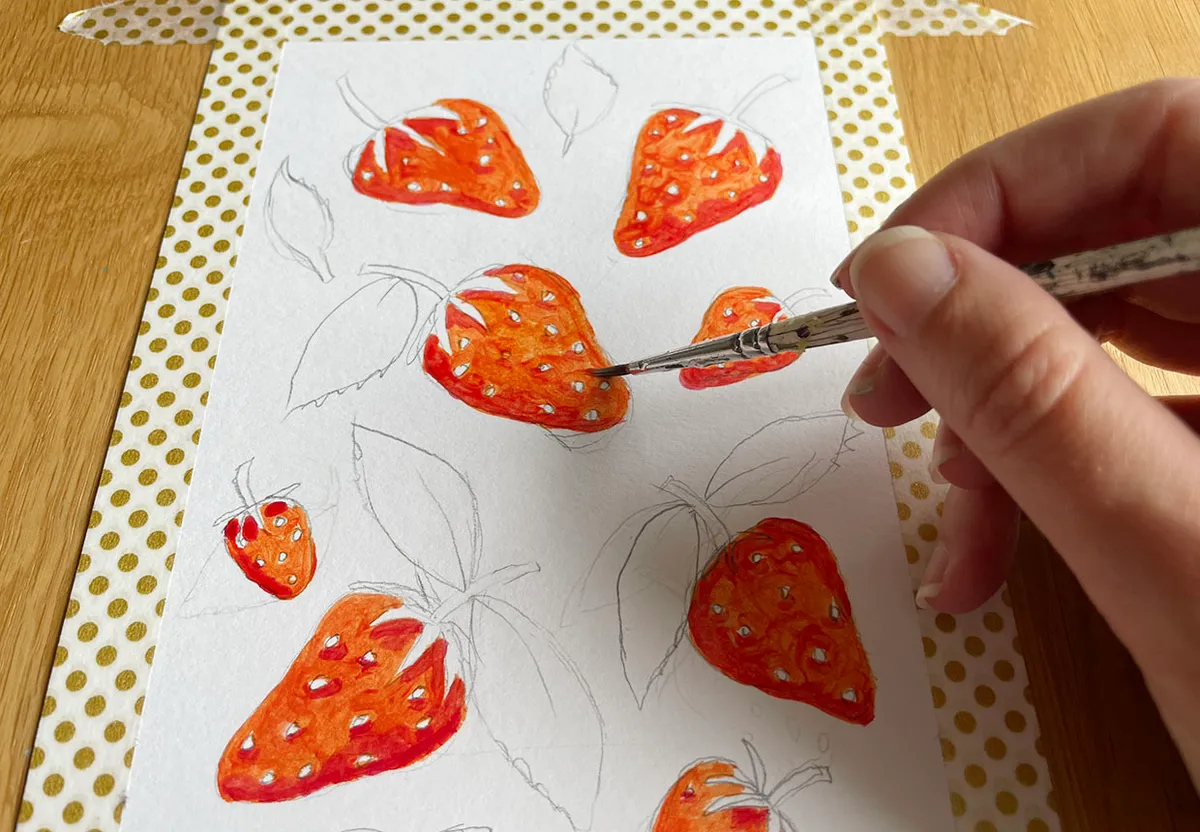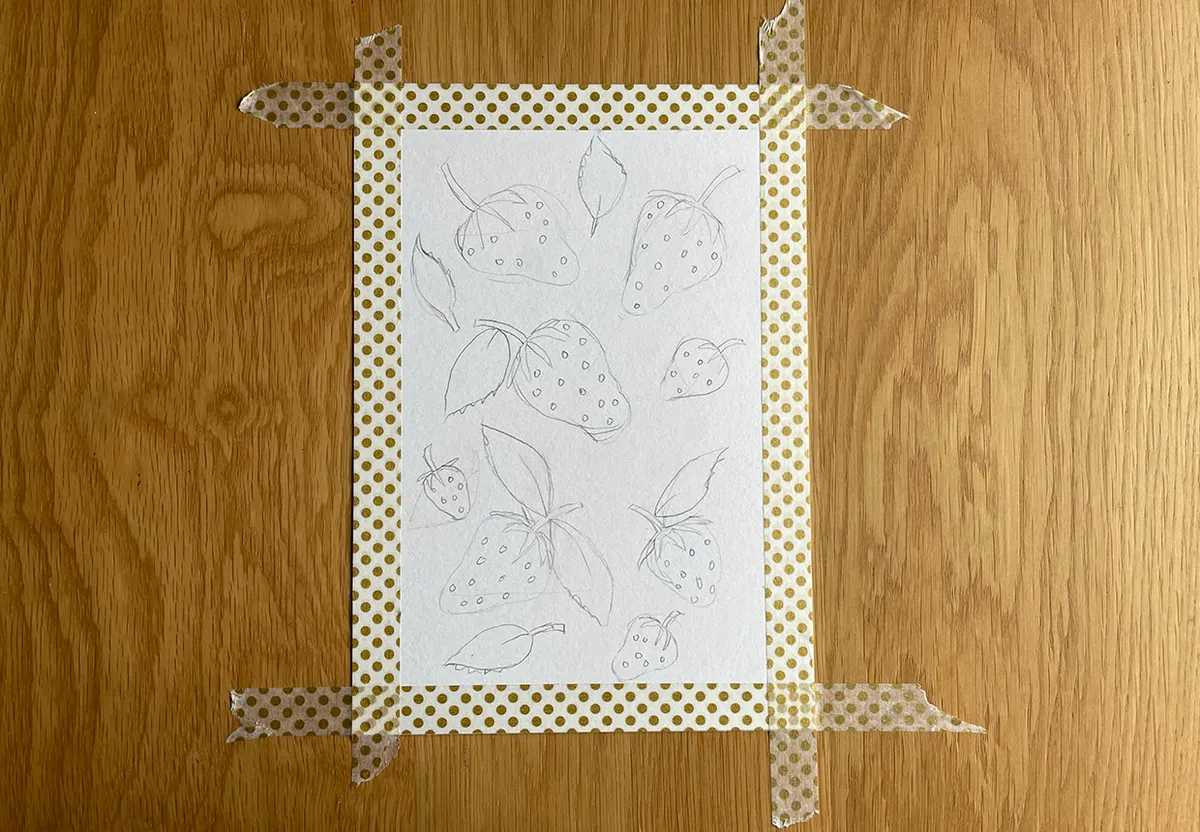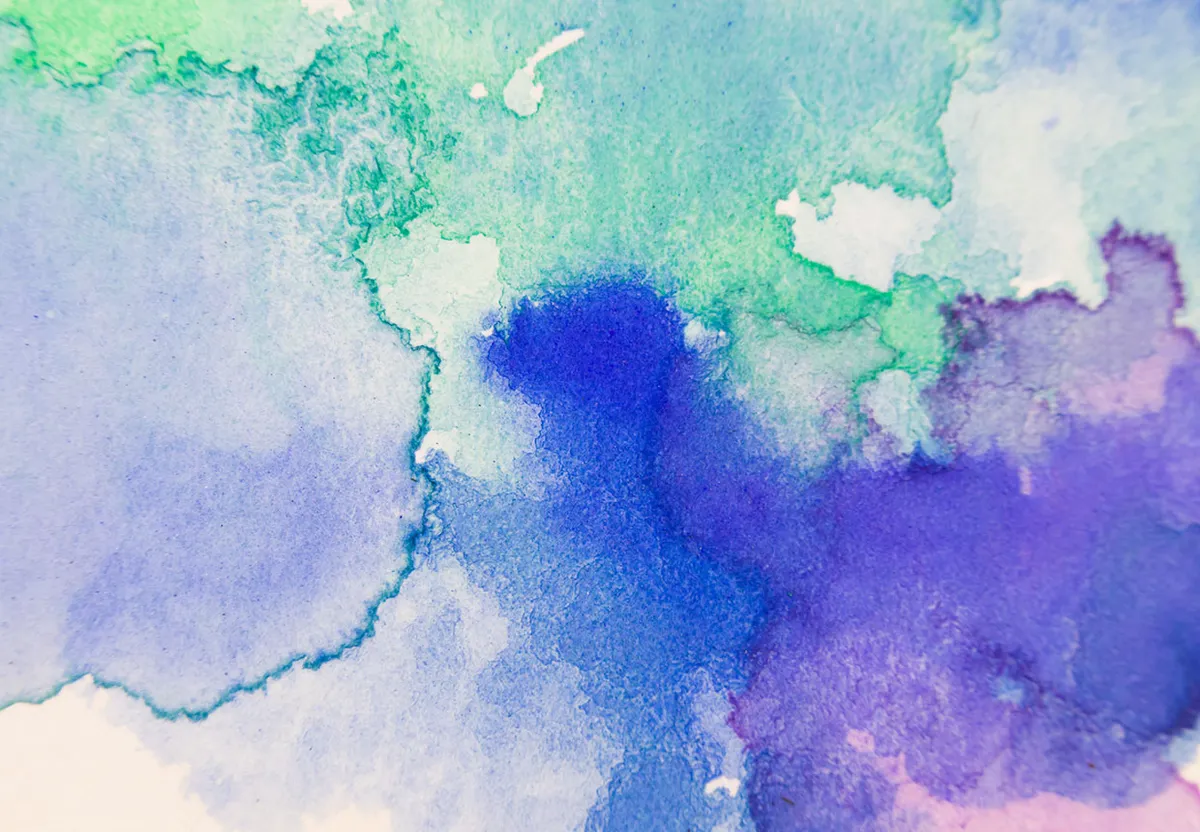Gouache can be used to paint everything from detailed illustrations to atmospheric paintings.
It has a distinctive matte finish that’s instantly recognisable, which is why it’s popular with both artists and illustrators.
Its fast drying time means that it’s ideal for a speedy painting session when you don’t have much time.
Gouache comes in a huge selection of luminous colours with intense pigments. Many of the shades are pre-mixed, which is super useful when you just want to start painting straight away.
Like any medium, knowing a few handy tips and tricks can help you to get the most out of your paints.
Gouache is ideal for complete beginners and even more experienced painters can pick up a tip or two!
Read on to learn how to use gouache with our handy hints.
How to use gouache
1. Work from dark to light
When you’re working with watercolour paints, you always start with your lightest colours, but when you’re painting with gouache it’s the complete opposite.
You can begin with your darkest colours and apply lighter colours over the top. Gouache paints are opaque, so you won’t see the darker colours shining through.
2. Watch out for colour shifting
It can be difficult to get exact colour matches when using gouache. Darker colours can dry lighter, while light colours can darken.
You can compensate for this by making the colours lighter or darker when you mix them on your palette. Get to know your paints so that you know how they’re going to look when they dry.
3. Paint base layers first
Block in larger areas of colour before moving on to the fine details. Outline the section of the painting with your brush, then fill in the middle.
If the colour isn’t as opaque as you’d like, go back over it and add a second coat of paint.
4. Experiment with adding more or less water
Gouache paint is water mixable, so you can thin its consistency using water. While it doesn’t behave in the same way as watercolour paint, you can dilute it to stain your background a particular colour as a base coat.
5. Use a fine brush for detailed work

When buying a set of gouache brushes, look for one that includes a small brush for fine details. If the set doesn’t include one, we’d recommend buying a fine brush separately.
The smallest brushes in a set are often too large for intricate work and you’ll end up feeling frustrated if you try to use them for that purpose.
6. Use white paint to lighten colours
If you want to make gouache paint lighter, it’s better to mix it with white paint opposed to watering it down. If you add the water the consistency will become too loose.
Using white paint will ensure that your colours are as clear and bright as you want them to be.

Start painting right away with our gouache painting ideas
If you’re feeling inspired and you’re ready to create fantastic gouache art, get started with Gathered’s stunning gouache painting ideas.
7. Seal your painting when it’s done
Preserve your masterpiece by sealing it when it’s finished. When your painting is completely dry, simply give it a spritz of fixative spray and admire your work!
You can also frame your painting, which will give it extra protection.
8. Reactivate your paints with water

One of the joys of working with gouache is that you can wet the paints to reactivate them. This gives you extra time to blend colours together or adjust the texture.
While this is usually a positive quality, adding water can also reactivate the underlying colours leading them to merge with your upper layers. This can result in muddy-looking shades.
If you want your underlying layers to be fixed when they’ve dried out, use acrylic gouache paint as this can’t be reactivated.
9. Rehydrate your paint palette
As we’ve mentioned, water will bring your gouache paints back to life! Re-wet your palette to keep using your pre-mixed colours.
Gouache paints are very economical to use. Although they might be expensive to buy, you can make a little paint go a long way and there’s very little waste.
Bear in mind that if you reactivate dried paints they’re likely to have a thinner consistency than they would if you were using them fresh from the tube. For more opaque colours, try to paint as quickly as possible.
You can keep your gouache usable for longer by making use of a stay wet palette, which will buy you extra time to paint.
10. Use masking tape for crisp borders
Giving your paintings a clean border instantly makes them look more professional.
You can use washi tape for this, but we’d recommend using artist’s masking tape as it’s less likely that water will seep underneath and spoil your painting.
Masking tape will also help to keep your paper flat as you paint and will stop it moving around if you’re working on a tabletop.
When you’re removing the tape, pull it 90° to the side as you peel it away from the paper. This can stop your paper tearing as you lift the tape off the page.
11. Limit your colour palette
Don’t go overboard and mix too many colours when you’re working with gouache. A limited palette of colours can be surprisingly effective!
Restricting your palette can prevent your colours becoming dull or muddy-looking, which is something that no gouache artist wants.
12. Wait for your layers to dry out
Prevent unwanted colour mixing by waiting for your layers to fully dry before painting on top. Luckily gouache dries very quickly, so you won’t be waiting for long!
As we’ve previously mentioned, painting with acrylic gouache can stop this from happening as it won’t reactivate when it’s dry.
13. Sketch an outline before you paint

Draw a light outline of your painting with a pencil before you begin. Gouache can cover up any pencil marks and you can remove any unwanted lines using a mouldable eraser (putty rubber).
If you’re using lighter gouache paints, you may still see some pencil marks showing through. Keep your lines as light as possible or erase them before painting with paler hues.
14. Stock up on the best gouache art supplies
Prepare to make your best work by ordering some high quality art materials. Explore our pick of the best gouache paints and discover the best brushes for gouache.
15. Create mixed media art
Gouache paintings have a slightly rough surface when they’re dry, which creates the perfect texture for mixed media art.
Dry over the top with pencils, marker pens, ink, chalk or pastels. The possibilities are endless!
16. Don’t use too much paint
Using too much paint can make your gouache art crack as it dries. It can take time to learn how much paint is safe to use, but that will come with experience.
Try to keep your painting surface flat and avoid bending it, as this can also cause cracking.
17. Keep your brushes clean
There’s nothing more annoying than putting down a colour and finding traces of the last paint you used on your brush.
Wash your brushes thoroughly between each colour. It’s a great idea to keep some kitchen towel or paper towels to hand to wipe away any paint residue on your brushes.
18. Take your art to the next level with smooth blending techniques
Learning how to blend your gouache paints can make a world of difference to your paintings.
In this video tutorial, gouache artist Jess Chung explains a variety of blending techniques that you can use in your work.
19. Use the dry brush technique
Want to add a little texture to your gouache paintings? If you’re used to working with acrylic paints, you may already be familiar with the dry brush painting technique.
Take a dry paintbrush and dip the bristles in a small amount of gouache paint, then drag it across your painting.
The dry brush technique adds a rough texture to your painting and can be used to add little tints of colour in a subtle way. Experiment with this method and see what interesting effects you can achieve.
20. Stain your paper
Sometimes staring at a blank piece of paper can stop you from getting started. Changing the colour can help you to get through this creative block and make it easier to put brush to paper.
Thin your paint to a watery consistency and cover your paper with the colour of your choice.
The shade you choose can give your painting a warmer or cooler tone. Think about how you’d like your finished painting to look when picking your stain colour.
For a rustic look, leave a little of your stain peeking through the upper layers of your painting. This can be very striking!
Make amazing illustrations by learning how to paint with gouache
Gouache is an incredible medium for artists of all levels, from complete novices to seasoned pros.
This hugely versatile paint medium is a popular choice for both artists and illustrators, who love its richly pigmented colours and matte finish.
Its short drying time makes gouache ideal for fast painting sessions or capturing a scene quickly.
By learning about gouache painting tips and techniques, you can learn to produce polished works of art or bold illustrations. The choice of subject matter is up to you!
Which is better: gouache paint or watercolours?
Gouache paints and watercolours can both be used to create showstopping paintings. Although both paints are water-based, they can produce very different effects.
We’ve compared the pros and cons of gouache vs watercolour to help you choose the best one for your next art project.

